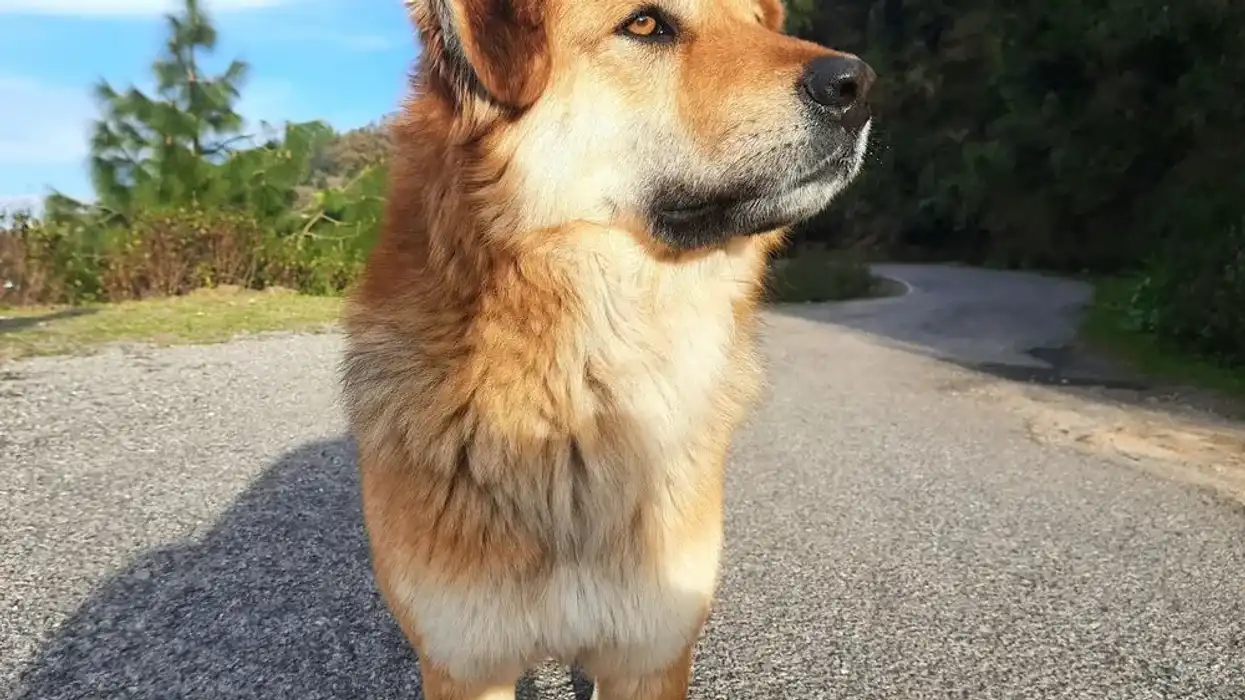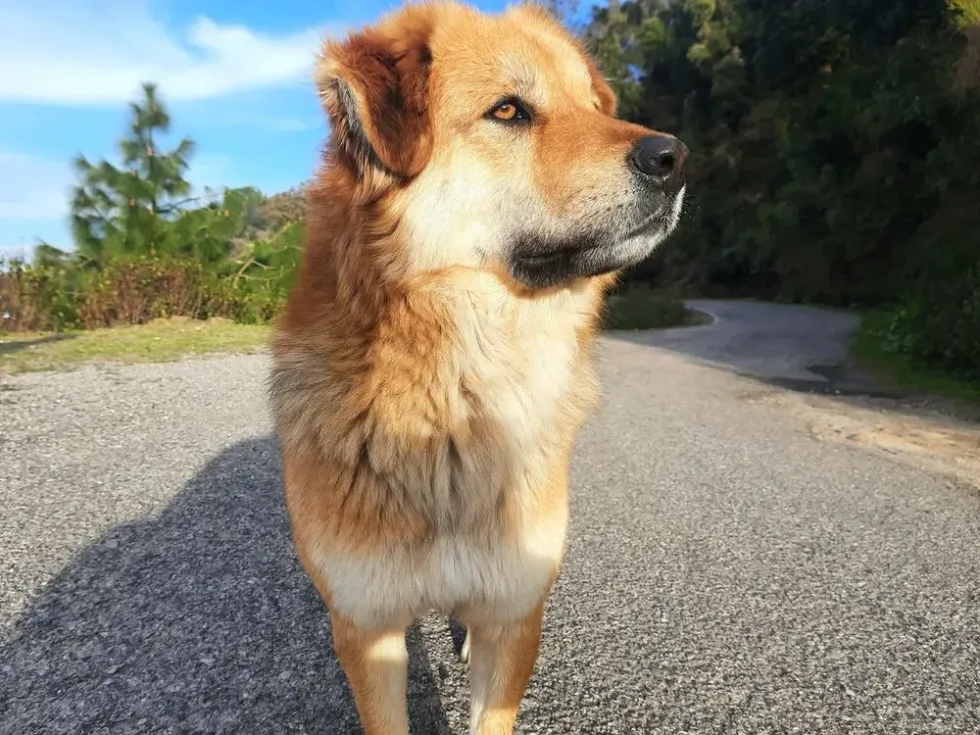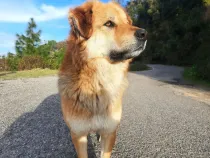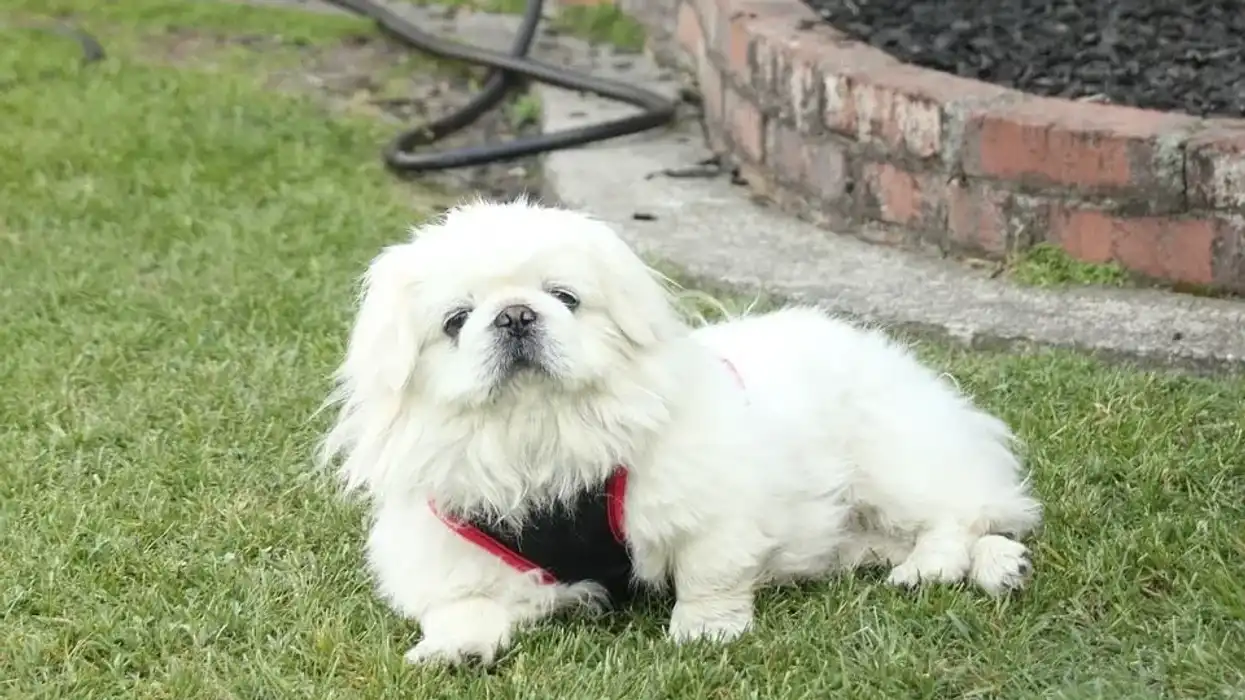Fun Chinook Dog Facts For Kids

Presently glorified as the state dog of New Hampshire, the chinook dogs have been categorized by the American Kennel Club (AKC) under the working group. However, the breed had to withstand many hurdles before making its survival to the present day possible.
According to the origin history, the chinook was bred by the explorer Arthur Treadwell Walden upon his return from the expedition in Alaska in the year 1896.
On the expedition, Walden worked assiduously as a riverboat pilot, stevedore, and primarily as a sled dog driver. Walden was the first breeder of these dogs as he developed the breed from a mastiff-type dog and Greenland huskies of Admiral Robert Peary.
The breed thus introduced by Walden gained recognition for its versatility.
However, the popularity of the breed was overshadowed by the newly introduced Siberian huskies (bred by Len Seppala). The breed was almost on the brink of extinction in the following years but was revived by some of the enthusiastic breeders who admired the breed for all its worth.
If you enjoyed these awe-inspiring chinook dog facts, then don't forget to have a look at some facts about other breeds of dogs like these red heeler facts and American bully facts.
Chinook Dog Interesting Facts
What type of animal is a chinook dog?
A chinook is a dog defined by the AKC as a working dog.
What class of animal does a chinook dog belong to?
Chinook dogs belong to the class Mammalia.
How many chinook dogs are there in the world?
The exact number of the breed in current existence is not known. However, the number of registered dogs has been recorded at an approximate value of 800 by the AKC. The dog is diminishing in population.
Where does a chinook dog live?
Although very famous in New Hampshire, the chinook is one of the rarest breeds registered in the AKC. Even though it is available throughout the world, you may have to hold on to your patience for quite some time before a good chinook puppy can be found for adoption.
These dogs are very popular in the state of New Hampshire in New England.
Currently, they can be found in several homes across the globe, snuggling with family members or even playing around with children in the backyard as a pet. Apart from homes where they live as a pet, they can also be located in rescues and shelters despite belonging to the purebred group of dogs.
What is a chinook dog's habitat?
Chinooks presently adorn the houses of their proud owners. Belonging to one of the working dog breeds, they can adjust in apartments but prefer gardens and yards to channelize their energy.
You may also expect your pet chinook to adapt well to harsh, cold climates as they inherit the innate quality of sled dogs. They have been often used in rescue parties as search-and-rescue dogs.
Who do chinook dogs live with?
In the modern world, this sled dog breed normally lives with owners and their family members as a pet dog.
How long does a chinook dog live?
These dogs enjoy a life span ranging from 12-15 years, and it goes without saying that the healthier the dog is, the longer its life would be.
How do they reproduce?
The reproduction process in Chinooks is similar to any other dog breed. Once both males and females attain puberty, they are ready to be bred.
However, this can sometimes prove to be extremely risky because a certain amount of maturity is essential to ensure a healthy litter. The age of about two years is considered the ideal time for initiating the breeding programs. Also, the breeding process needs to be carried out under the expert supervision of professional breeders.
Mating is conducted when a female gets the heat cycle. During this time, females become more receptive towards males. After successful mating, a female enters the gestation period of about 60-63 days post-conception.
Females require a great deal of attention during this span. A healthy female can be bred to give birth to a litter of three to six puppies.
What is their conservation status?
The conservation status of the Chinooks is Not Listed by the International Union for Conservation of Nature (IUCN). Kennel clubs deem the chinook breed to be in a vulnerable position owing to the gradual decline in population and popularity as pet breeds.
Chinook Dog Fun Facts
What does the chinook dog look like?
The dignified personality of chinooks can be attributed to its appearance. They have a muscular and sturdy build in a medium body. These dogs come in several shades of golden-red, fawn, silver-fawn, palomino, and gray-red.
They have deep eyes in the shape of almonds, an aquiline muzzle, erect ears, sickle-like curved tail (when held upright), and a tawny-colored outer coat. Some variants of the breed also possess buff markings on several parts of their body, including throat, chest, stomach, or cheeks.
They have a double fur coat. This fur coat protects them during chilly, icy-cold winters. Apart from the double coat, the chinook is also supposed to have darker coloration in its ears and muzzle compared to their bodies.
A male chinook exhibits a masculine look while a female can be distinguished by its feminine attributes. However, their body is comparatively longer rather than tall. These dogs have a hardy structure that aids them in dog sports, especially in sled dog racing.
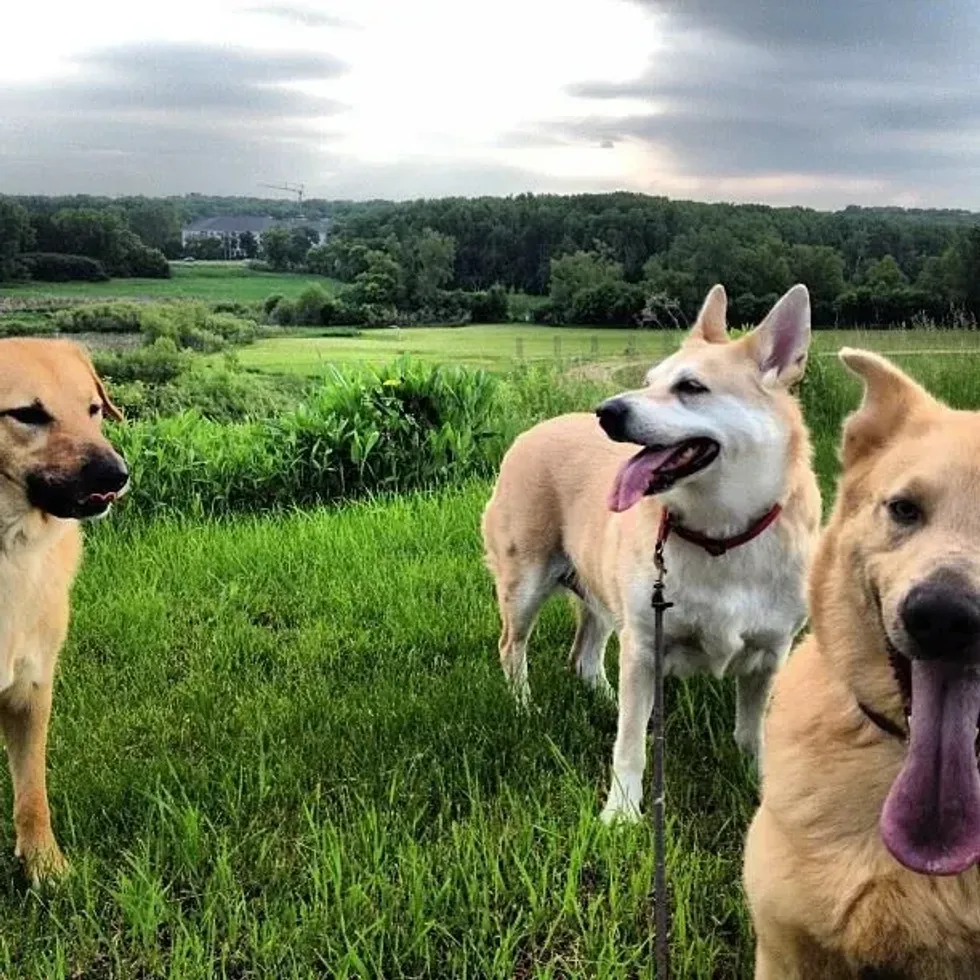
How cute are they?
Chinook puppies are just so adorable! The affectionate and humble personality of the sled dog makes it one of the breeds that are an absolute darling to have as a pet in your life. Although they do not have a fluffy coat with a lot of furs, they are extremely graceful as adults and playful as puppies.
How do they communicate?
Chinooks belong to those breeds that are very outspoken and sociable dogs.
The breed conveys its feelings and emotions through the resources of its body language as well as distinct vocalizations.
Although the breed is not known to bark too much, it often portrays its happiness, excitement, anger, anxiety, and fear by implementing several modes of vocal expressions like barking, growling, howling, whimpering, snarling, and whining.
An overjoyed dog is commonly seen wagging its tail, roaming about in circular motions, and also hopping around (often upon reunion with its master after a long working day).
On the other hand, a dog suffering from depression and anxiety might not betray signs of enthusiasm or joyfulness and would mostly lie down in silence.
How big is a chinook dog?
These medium-length sled dogs normally stand at around 22-26 in (56-66 cm) when measured from the shoulder length. Females measure around 25 in (64 cm) at the shoulder, while the males (generally bigger) stand at approximately 27 in (69 cm).
They are undoubtedly smaller than the bigger breeds like the great danes that measure around 32 in (81 cm) at the shoulder. They are significantly larger than the lapdogs like chihuahuas and Yorkshire terriers.
How fast can a chinook dog run?
Chinooks are known to be filled with great energy. The accurate speed range of these dogs is yet to be recorded.
However, they possess the power and strength of a freight dog coupled with the swiftness and agility of a sled dog which implies that they can sprint at great speeds. If you follow a chinook trail, you would know how long a distance they can tirelessly cover! Regular exercise helps to increase the fitness levels of these dogs.
How much does a chinook dog weigh?
On average, the weight of chinooks ranges between 50-90 lb (23-41 kg). Males are bulkier with a weight of around 55-90 lb (25-41 kg), while the weight of females is limited to 50-65 lb (23-29 kg).
What are the male and female names of the species?
The male and female names of the breed are a dog and a bitch, respectively.
What would you call a baby chinook dog?
A baby chinook dog can be fondly called a pup. The name puppy is normally used for baby dogs.
What do they eat?
Due to being adept guard dogs, chinooks generally have a high energy level due to which requires a highly nutritious diet rich in protein, essential animal fats, vitamins, minerals, and omegas. The amount of food largely depends on the age, weight, and health condition of the dog.
A puppy can be fed three to four times in small proportions per day, while the adults require larger meals twice a day. They can be offered dry dog food readily available in markets.
However, the diet must be wholesome, comprising raw meat, soft bones, fats, fish, green vegetables, enriching fruits. It must be noted that some fruits and vegetables are toxic for dogs, and they must be avoided.
Are they slobbery?
Chinooks do not have the tendency to slobber or drool too much. They naturally have very low drooling habits. However, a dog might drool excessively owing to medical issues or even out of anxiety. In cases of abnormal slobbering, the dog must be taken to the nearby vet for immediate medical treatment.
Would they make a good pet?
Chinooks can prove to be the best pets, especially when children are around. These dogs are always eager to please, very obedient, and easy to train.
With proper social training, they can gel up well with strangers. However, it must be remembered that adoptions must be made from a professional and ethical breeder, and you must have the resources to take care of the dog.
Did you know...
The name chinook in Native American terminology means 'warm wind'. The first of the lot (the lead dog) was named chinook by Arthur Walden, the founder of the group, for its warm and outgoing nature.
The United Kennel Club identified these versatile dogs as a distinct breed in the year 1991.
In 1928, Admiral Richard Byrd was assisted by Warden and his team on his expedition to Antarctica. The lead dog, namely Chinook, was 11 years at that time.
Byrd was extremely overwhelmed at the performance of the team and mentioned, "Walden's single team of thirteen dogs moved 3,500 pounds of supplies from ship to base, a distance of 16 miles each trip, in two journeys. Walden's team was the backbone of our transport."
Chinooks are not known to be hypoallergenic. The dander and fur from these dogs might cause allergic reactions.
Like any other dog breed, chinooks have certain health conditions. A chinook must be taken to a vet for checkups twice a year to ensure a longer life span.
Some of the major health issues include luxating patella, cataracts, elbow dysplasia, retinal dysplasia, allergies, and hip dysplasia.
Apart from these usual illnesses, there are a few other infrequent health issues like bone cancer, hypothyroidism, colitis, and heart diseases. In case a dog develops any of the abovementioned health conditions, it has to be rushed to a vet for urgent medical aid as an untreated ailment can prove to be tormenting or even fatal for the breed.
Are chinooks good family dogs?
Chinooks have the most favorable temperament among all breeds. They are extremely benign and humble. Additionally, they are adored by children for their playful and generous nature.
Normally, the soft temperament of these well-bred dogs does not allow for any kind of violent or aggressive behavior. Before adoption, some background information about the breed is essential. These dogs require nutritious food, daily exercise for about half an hour along with several training programs, and occasional grooming to maintain good health.
Training and exercise regimes might also include amusing games or hikes. Grooming includes dental care, cleaning the ears, trimming the nails, brushing, cleaning, and washing (twice a month). Apart from seasonal shedding, these dogs are moderate shedders.
The cost of a chinook puppy ranges somewhere between $800 to $1,000 depending on the location, availability, adeptness of the breeder, gender, and health quality.
Are Chinook dogs rare?
The Guinness Book of World Records considered these dogs as a rare breed having just about 125 specimens. Even in the current scenario, the professional breeders are investing all possible resources and working tenaciously to save the breed.
Here at Kidadl, we have carefully created lots of interesting family-friendly animal facts for everyone to discover! For more relatable content, check out these Kangal facts and grey seal facts pages.
You can even occupy yourself at home by coloring in one of our free printable chinook dog coloring pages.
We Want Your Photos!
More for You
See All
Bachelor of Arts specializing in Journalism and Mass Communication, Postgraduate Diploma in Sports Management

Moumita DuttaBachelor of Arts specializing in Journalism and Mass Communication, Postgraduate Diploma in Sports Management
A content writer and editor with a passion for sports, Moumita has honed her skills in producing compelling match reports and stories about sporting heroes. She holds a degree in Journalism and Mass Communication from the Indian Institute of Social Welfare and Business Management, Calcutta University, alongside a postgraduate diploma in Sports Management.
Bachelor of Arts specializing in Economics

Gowri RaoBachelor of Arts specializing in Economics
With a bachelor's degree in Economics from Krea University, Gowri is a highly skilled data analyst and an expert in regression and causation modeling. Her interests in economic trends, finance, and investment research complement her professional expertise. In addition to her professional pursuits, Gowri enjoys swimming, running, and playing the drums, and she is also a talented tutor.
Disclaimer
1) Kidadl is independent and to make our service free to you the reader we are supported by advertising. We hope you love our recommendations for products and services! What we suggest is selected independently by the Kidadl team. If you purchase using the Buy Now button we may earn a small commission. This does not influence our choices. Prices are correct and items are available at the time the article was published but we cannot guarantee that on the time of reading. Please note that Kidadl is a participant in the Amazon Services LLC Associates Program, an affiliate advertising program designed to provide a means for sites to earn advertising fees by advertising and linking to Amazon. We also link to other websites, but are not responsible for their content.
2) At Kidadl, we strive to recommend the very best activities and events. We will always aim to give you accurate information at the date of publication - however, information does change, so it’s important you do your own research, double-check and make the decision that is right for your family. We recognise that not all activities and ideas are appropriate for all children and families or in all circumstances. Our recommended activities are based on age but these are a guide. We recommend that these ideas are used as inspiration, that ideas are undertaken with appropriate adult supervision, and that each adult uses their own discretion and knowledge of their children to consider the safety and suitability. Kidadl cannot accept liability for the execution of these ideas, and parental supervision is advised at all times, as safety is paramount. Anyone using the information provided by Kidadl does so at their own risk and we can not accept liability if things go wrong.
3) Because we are an educational resource, we have quotes and facts about a range of historical and modern figures. We do not endorse the actions of or rhetoric of all the people included in these collections, but we think they are important for growing minds to learn about under the guidance of parents or guardians.
